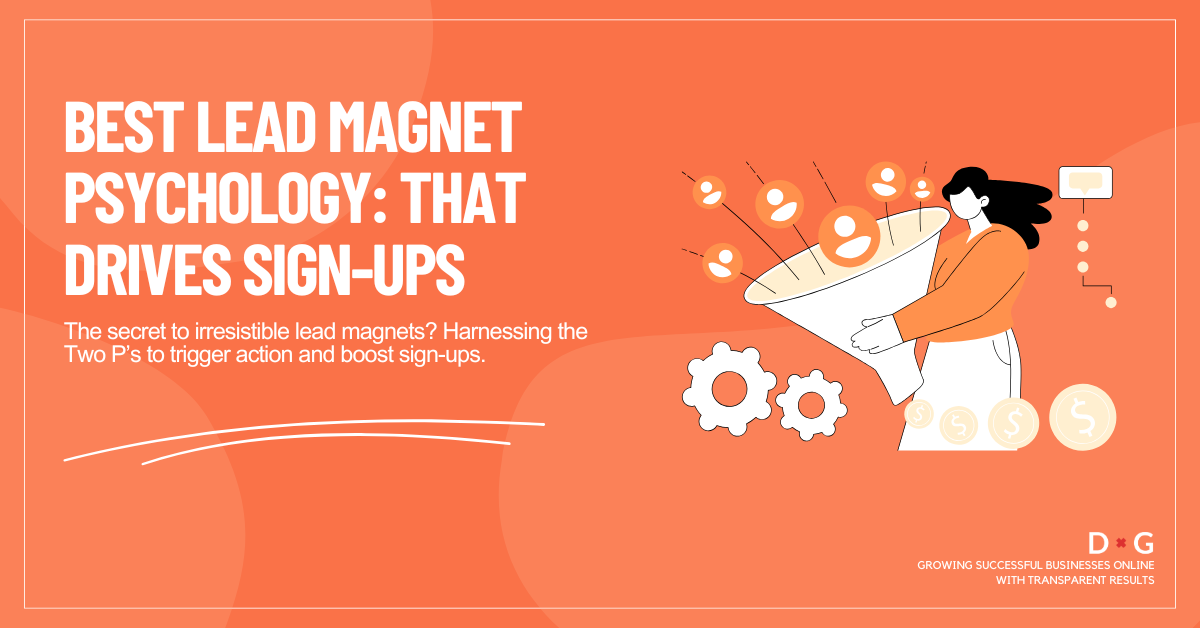
You’ve got a lead magnet, maybe it’s a free checklist, an eBook, or a short video training. You’ve put in the work, shared it online, and waited for the sign-ups to roll in… but instead, you get silence.
The truth? Having a “freebie” isn’t enough anymore. People are flooded with offers every day, and most of them don’t even stop to think twice. If your lead magnet isn’t sparking curiosity and emotion from the very first moment they see it, it’s going to be ignored.
But some lead magnets do stand out. They make people click, get intrigued, download, and even share it with their friends. They’re made to ignite urgency and are impossible to resist. It’s about using a simple formula that taps into the deepest motivations of your audience.
We call it the Two Ps. And once you learn how to use them, your lead magnet will stop collecting dust and start collecting leads.
Why Most Lead Magnets Fail
Many businesses create lead magnets by thinking only about the content:
“Let’s give them a free PDF.”
“We’ll have a webinar for them.”
“Let’s write a short guide.”
While the freebies matter, it’s not what convinces someone to take action. What matters most is the reason they should care. If your offer doesn’t connect to something they truly want, then accept the fact that you will get ignored.
The Secret Behind High-Converting Lead Magnets
High-converting lead magnets have one thing in common: they speak directly to what matters most to the person reading. They don’t just say “Here’s free stuff!” they say, “Here’s the key to fixing your biggest frustration or achieving your biggest dream.”
That’s where the Two Ps come in.
What Are The Two Ps in a Lead Magnet?
Before we dive into creating your lead magnet, let’s break down the two Ps that drive every decision your audience makes. These are the emotional levers that either pull people toward taking action or push them away from staying stuck.
Pleasure
Pleasure is the good stuff people want in their lives: confidence, freedom, success, and peace of mind. It’s the reward for taking action.
Examples of pleasure in marketing:
- A freelancer earning more and working fewer hours.
- A parent feeling relaxed and present with their kids.
- A business owner finally hitting their sales target.
Pain
Pain is what people desperately want to avoid: stress, loss, failure, or embarrassment. It’s the discomfort they feel right now or fear in the future.
Examples of pain in marketing:
- Losing hours to work that automation could handle in minutes.
- Losing money due to poor planning.
- Feeling stuck while competitors move ahead.
Why the Two Ps Work So Well
Every decision humans make is driven by these two forces: moving away from pain and moving toward pleasure.
Pain creates urgency.
Nobody wants to stay stuck in a bad situation.
Pleasure creates desire.
People can picture a better, happier version of themselves.
When you use both in your lead magnet, you give people two powerful reasons to decide.
3-Step Process to Apply the Two Ps
This easy three-step method shows you how to combine pleasure and pain in your lead magnet so it grabs attention, sparks urgency, and demands action.
Step 1:
Identify the Problem Your Lead Magnet Solves
Make sure you understand precisely what problem your lead magnet tackles before you start writing the title.
Ask yourself:
- What is my audience struggling with right now?
- What do they wish they could fix today?
Step 2:
Uncover the Pain Points if Left Unsolved
If they ignore your lead magnet, what happens?
Paint a clear picture. Show them the frustration, cost, or wasted time that could happen without your solution.
Step 3:
Highlight the Pleasure Points of Taking Action
Now flip the story.
Show them the best-case scenario, what life looks like after they’ve used your lead magnet.
Examples of the Two Ps in Action
| Lead Magnet | Pain Avoided (Make Them Feel It) | Pleasure Gained (Make Them Want It) |
| One-Hour Brand Makeover Blueprint | Stop guessing why your brand isn’t connecting with your audience | Transform your brand into one that instantly attracts and keeps loyal customers |
| Small Business Tax Savings Checklist | Stop stressing over missed deadlines and costly mistakes | Save thousands and stay confident about your finances |
| 30-Minute Daily Sales Script | No more fumbling through awkward, silent calls | Speak with confidence and close deals like a pro every day |
| Email Subject Line Swipe File | Quit sending emails that get ignored and deleted | Instantly boost opens and clicks with proven, irresistible hooks |
Even with the right framework, it’s easy to fall into traps that weaken your lead magnet’s impact. Avoid these common mistakes to ensure your message stays powerful, balanced, and motivating.
Only talking about pleasure
Without urgency, people delay action.
Only talking about pain
Too much negativity can push people away.
Being too general – “Save time” is weak; “Get back 5 hours a week for family” is stronger.
How to Use This in Your Own Lead Magnet
- Make a list of your audience’s top 5 frustrations.
- Make a list of their top 5 desires.
- Weave both into your title, your description, and your call-to-action.
If you want to go deeper into persuasive marketing, check out our blog about David Ogilvy’s Copywriting Principle That Converts.
Conclusion
The Two Ps of Lead Magnet, Pleasure and Pain, are your shortcut to creating irresistible offers. By showing your audience both what they’ll avoid and what they’ll gain, you give them no reason to ignore your freebie.
Don’t just tell people what your lead magnet is. Make them see the challenge it solves, the tension it removes, and the change it delivers. When you do that, your lead magnet will stop being “just another free thing” and start becoming the solution they’ve been waiting for.
Now it’s your turn choose a problem your audience has, map out the pain and pleasure, and start creating a lead magnet that actually works.
